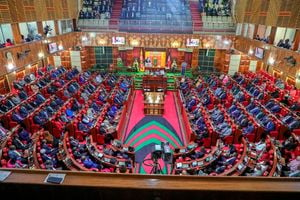With data, the value is in people, not statistics

Internet users. PHOTO/FILE
What you need to know:
are we critical in thinking about where the data comes from, who is producing it and for what purpose?
We should also begin to think about not only relying on the data that we’re given, but looking for our own.
- To rely only on large-scale numbers — such as website views — is useful. But it is not enough.
In recent years, we have become obsessed with numbers, especially those to do with the digital world. How many Twitter followers do you have? How many visits to your website? Likes and comments on your last Facebook post?
The second round of census data came out last week and off we went again. How many Ethnic Group X are there? You mean there are so many of Ethnic Group Z? I’ll leave politicians to unpack the data.
But one story in the 2019 census media coverage caught my eye. It said that only one in five Kenyans has internet access. How? All these years, we thought more than 100 per cent of us had it, mostly men. The Kenya National Bureau of Statistics said no, it’s only 20 per cent, and mostly women.
We’ve been reading those Communications Authority of Kenya (CA) statistics faithfully. They say 52 million of us have internet subscriptions. We are 47.6 million Kenyans; that is more than 100 per cent. That pretty much means everybody and their babies, grandparents, managu suppliers, rural and urban school mates and relatives can go online.
So who is right? Or wrong? Did Kenyans hide information from the census people, tech-friendly as they were, counting with their mobile digital gadgets? Is the CA so determined to make us look really good in the digital space that it gives us such high percentages? The writer of the story I read clearly felt that the KNBS was more accurate, and that somebody somewhere had not done their job properly.
The irony, in my view, is that ‘somebody’ includes the media.
The CA’s sector statistics are drawn from data it receives from the telecommunications companies based on registered SIM card users. KNBS went door-to-door, asking about internet-related information for the household. KNBS and CA, both government entities, are right. It all depends on where and how they got the data.
The breakdown of who owns how many SIM cards is not provided in the CA report. But we know that many individuals or organisations own several.
The numbers from either organisation are not wrong but how they are gathered and interpreted is what matters. That is where the media and everybody else should be more analytical in thinking through the information we gather.
Which takes me back to our obsession with numbers. They are everywhere. But are we critical in thinking about where the data comes from, who is producing it and for what purpose? We should also begin to think about not only relying on the data that we’re given, but looking for our own. To rely only on large-scale numbers — such as Twitter followers or website views (‘eyeballs’) — is useful. But it is not enough. Whether you are an e-commerce outfit looking for customers, a church connecting with congregants on YouTube or an individual growing their online presence, invest in finding out more about those liking/clicking/commenting/sharing on your timelines.
In other words, go beyond the web metrics. Look for and find the people who make up those statistics. Then talk to them.
Your web statistics may show that most of your audience are men aged 35-38, yet your target is men aged 20-28. How will you reach them? Why are the men in their late 30s interested in your site/content?
‘Why’ questions are not answered by big volumes of data; they need interaction and discussion. They need human connection. Think about that on Saturday as we make the International Open Data Day, which promotes awareness and use of publicly available data.
Numbers are good. But it is people who tell the real story.
Dr Wamunyu (PhD) is a senior lecturer at Daystar University. @MwalimuW





